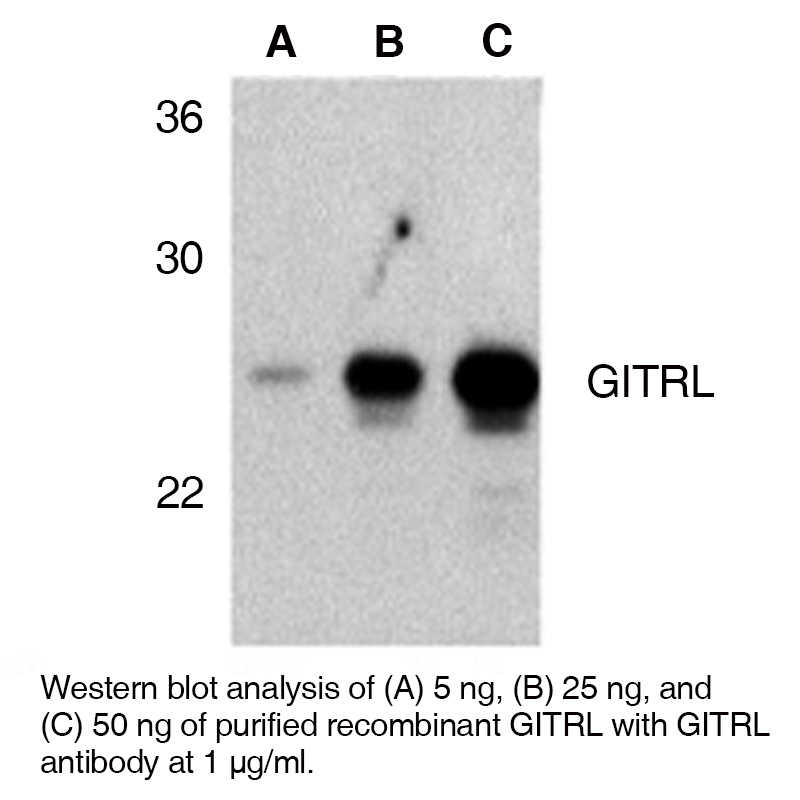Anti-Human GITRL
| Code | Size | Price |
|---|
| LEI-G620-20ug | 20 ug | £199.00 |
Quantity:
| LEI-G620-0.1mg | 0.1 mg | £591.00 |
Quantity:
Prices exclude any Taxes / VAT
Overview
Host Type: Rabbit
Antibody Clonality: Polyclonal
Regulatory Status: RUO
Target Species: Human
Applications:
- Immunohistochemistry- Paraffin Embedded (IHC-P)
- Western Blot (WB)
Shipping:
Ambient
Storage:
This polyclonal antibody is stable for at least one week when stored at 2-8°C. For long term storage aliquot in working volumes without diluting and store at -20°C in a manual defrost freezer. Avoid Repeated Freeze Thaw Cycles.
Images
Further Information
Concentration:
0.2 mg/ml
Conjugate/Tag/Label:
Purified No Carrier Protein
Format:
This polyclonal antibody is formulated in phosphate buffered saline (PBS) pH 7.4 containing 0.02% sodium azide as a preservative.
Formulation:
This polyclonal antibody is formulated in phosphate buffered saline (PBS) pH 7.4 containing 0.02% sodium azide as a preservative.
Long Description:
The tumor necrosis factor (TNF) and TNF receptor (TNFR) gene superfamilies regulate numerous biological functions including cell proliferation, differentiation, and survival through regulating the activation of the transcription factor NF-κB and various mitogen-activated protein kinases (reviewed in 1). The glucocorticoid-induced tumor necrosis factor receptor (GITR) is an emerging member of this family that is expressed on CD4+ CD25+ regulatory T cells and appears to have crucial immune regulation functions.2,3 Its ligand GITRL is expressed in endothelial and antigen-presenting cells4 and can activate NF-κB, induce both pro- and anti-apoptotic effects, inhibit the suppressive activity of regulatory T cells, and co-stimulate responder T cells through GITR.5 Dominant negative forms of NIK and TRAF2 expressed in transfected 293 cells substantially inhibited NF-κB activation, suggesting that the GITRL-GITR pathway involves both NIK and TRAF2.4
Target:
GITRL
References
1. Gaur, U. et al. (2003) Biochem. Pharmacol. 66:1403 2. Ronchetti, S. et al (2002) Blood 100:350 3. Shimizu, J. et al. (2002) Nat. Immunol. 3:135 4. Gurney, AL. et al. (1999) Curr. Biol. 9:215



